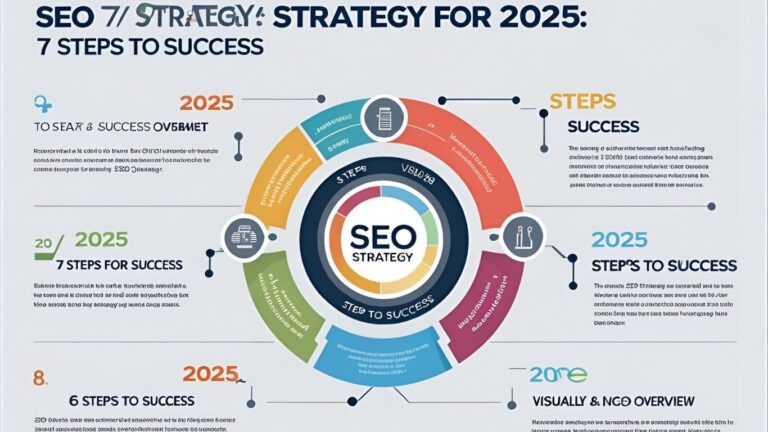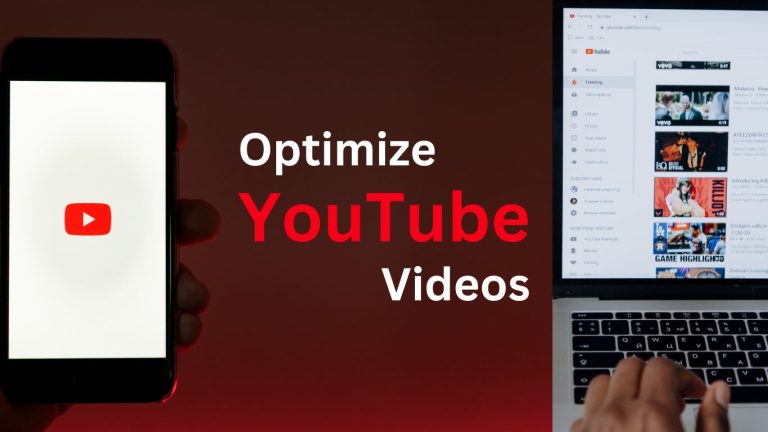How to Use Chatbots in Marketing: 5 Steps That Boost Leads & Delight Customers #Chatbots #Marketing #Growth
How to Use Chatbots in Marketing: 5 Steps for Success
Introduction: Why Chatbots Are Reshaping Marketing
How to Use Chatbots in Marketing is no longer a futuristic question—it is today’s reality for businesses of every size. Imagine a shop where every visitor is greeted instantly, guided through shelves, and offered tailored suggestions, even when the shopkeeper is asleep. That’s what a chatbot can do in the digital world.
Marketing is not just about selling a product; it is about creating an experience that lingers in memory. I remember a small clothing boutique in Kolkata, where the shop owner would never let anyone leave without a warm “Did you find what you were looking for?” Chatbots mimic this timeless courtesy—except they scale it to thousands of customers at once.
Transitioning from manual email replies and clumsy ticketing systems, chatbots now offer something deeper: speed, personalization, and presence. They don’t replace humans; they complement them. They’re like the eager young apprentice who learns fast, works tirelessly, and ensures that no potential customer slips through the cracks.
And here’s the emotional truth: people don’t just buy products; they buy the comfort of being heard. Chatbots, when set up well, whisper to customers, “You matter. Your question matters. Your time matters.”
So, let’s walk through five essential steps to harnessing this quiet revolution, and along the way, I’ll share how you can integrate tools and strategies that don’t just improve sales—they can transform relationships.
Step 1: Choosing the Right Chatbot Platform
Selecting the right chatbot platform is like choosing the right stage for a performance. You may have the best script and actors, but if the stage is shaky, the play collapses. Similarly, no marketing strategy can thrive if the chatbot is clunky, unresponsive, or hard to integrate.
Features to Look For
- Seamless Integration: Your chatbot must connect with CRMs like HubSpot or Zoho, and marketing platforms like Mailchimp. Why? Because marketing is not a solo act; it’s a symphony where every instrument must be tuned.
- AI-Powered Intelligence: Modern chatbots should go beyond rule-based Q&A. They should learn, adapt, and personalize interactions.
- Multi-Channel Support: A customer might first message you on Facebook, then shift to your website. Your chatbot should follow seamlessly, like a polite host guiding someone from one room to another.
Balancing Cost vs. Performance
There’s always the temptation to grab a free tool, but in marketing, “cheap” can be expensive. Imagine running ads to bring visitors to your site, only to watch them leave because your free chatbot couldn’t handle a simple query.
👉 Affiliate Hook: If you’re starting out, platforms like Tidio and ManyChat offer affordable, beginner-friendly solutions. For enterprise-level sophistication, Intercom or Drift are powerful, albeit pricier, but their performance justifies the investment.
How to Use Chatbots in Marketing effectively begins right here—with the foundation. Choose wisely, because the platform you select will determine how customers perceive your brand.
Step 2: Setting Up Your Chatbot for Maximum Impact
Think of this step as teaching your new apprentice the ways of your store. It’s not enough to hire someone; they must know the culture, tone, and goals of your business. Setting up a chatbot is the same—it needs careful nurturing.
Integration with CRM and Marketing Tools
A chatbot that cannot feed captured leads into your CRM is like a sieve that loses water as quickly as you pour it in. Connect your chatbot to your CRM so customer data flows smoothly. Platforms like HubSpot CRM even allow direct lead scoring, so your sales team knows which prospect to chase first.
For email marketers, syncing your chatbot with tools like ActiveCampaign means every captured email can instantly join an automation sequence. This is where the magic of efficiency shines.
Conversation Flow Design
Now, imagine stepping into a theater where the dialogues are dull and predictable. You’d walk out. Similarly, customers abandon chatbots with rigid, robotic answers.
Design flows with a natural rhythm:
- Start with a warm greeting: “Hi there! Looking for something specific or just exploring?”
- Offer guided paths: “Do you want product info, customer support, or special offers?”
- End with a meaningful close: “Glad I could help. Want me to send you updates on new deals?”
👉 Affiliate Hook: Tools like Landbot provide drag-and-drop flow builders that even non-tech marketers can master. With a little creativity, you can build flows that charm rather than frustrate.
Remember, How to Use Chatbots in Marketing isn’t about cold automation. It’s about orchestrating conversations that feel like a helpful friend guiding you through choices.
Step 3: Using Chatbots for Customer Support
Here lies the heart of the matter. Marketing doesn’t end with the click of a “Buy Now” button; it extends into support, reassurance, and care. When customers face hurdles, your chatbot should be the first comforting hand.
Reducing Response Time
In a world where seconds feel like hours, speed wins hearts. If your chatbot can resolve FAQs instantly—return policies, order tracking, payment issues—customers feel relief. Relief is emotional gold in marketing.
I once tested a chatbot on a travel site. My query about rescheduling flights was answered in under a minute, saving me from endless IVR loops. That instant relief made me trust the brand more than their competitors.
Enhancing Customer Satisfaction
Support is not only about fixing; it’s about soothing. A well-scripted chatbot can diffuse frustration. Instead of robotic replies like “Invalid request,” imagine:
“Hmm, looks like I couldn’t catch that. Can I connect you with a human who can help right away?”
This simple touch—acknowledging human fallibility—creates empathy. And empathy sells.
👉 Affiliate Hook: Platforms like Freshchat and Zendesk Answer Bot excel in blending self-service with human escalation. They ensure no customer feels abandoned.
Ultimately, How to Use Chatbots in Marketing extends to ensuring that even after purchase, customers feel cared for. A customer who is heard becomes a customer who returns—and recommends.
Step 4: Generating and Qualifying Leads with Chatbots
If Step 3 was about nurturing trust after a sale, Step 4 is about igniting interest before the sale even happens. At its essence, How to Use Chatbots in Marketing is about turning curious visitors into warm prospects.
Lead Capture Strategies
Think of your chatbot as a friendly gatekeeper at a bookstore. Instead of asking, “May I have your email?” (which feels transactional), it says: “Want me to send you a free guide on the top 10 must-read novels this year?” That feels generous, engaging, irresistible.
Chatbots shine at:
- Pop-up invitations: “Need help finding the right product? Let me send you recommendations.”
- Interactive quizzes: “Answer 3 quick questions and I’ll match you with your perfect fit.”
- Time-sensitive offers: “This coupon expires in 30 minutes—want me to send it to your inbox?”
👉 Affiliate Hook: Drift and MobileMonkey are masters of lead-gen flows. They integrate with email lists, so your captured leads don’t just sit idle; they enter nurtured campaigns instantly.
Nurturing Prospects Automatically
Once you’ve captured a lead, the chatbot doesn’t vanish. It becomes a guide—sending reminders, personalized offers, or progress nudges.
A lead captured at midnight could be nurtured by dawn. Imagine waking up to find five warm leads waiting in your CRM, all thanks to your chatbot working tirelessly.
This is not automation for the sake of convenience; it’s automation for the sake of continuity. Your brand remains present, even in your absence.
Step 5: Personalizing Customer Experiences
No one likes being treated as just another name in a crowd. If Step 4 was about attracting leads, Step 5 ensures they stay enchanted. The art of How to Use Chatbots in Marketing lies in personal touches that whisper, “We know you.”
Data-Driven Personalization
Imagine a visitor browsing shoes on your website. The chatbot greets them:
“Looking for running shoes? I can show you our latest arrivals in your size.”
This is not science fiction. By integrating with analytics tools, chatbots can recall browsing history, purchase patterns, and even geo-location data. Suddenly, the chatbot is not a faceless bot—it is a savvy shop assistant who remembers your tastes.
👉 Affiliate Hook: Platforms like Ada and Chatfuel excel in personalized flows. They let you craft responses based on user behavior, making every conversation uniquely tailored.
Creating a “Human-Like” Feel
The danger with chatbots is slipping into the cold monotony of yes/no scripts. To avoid this, give your chatbot a voice. Friendly, witty, maybe even with a dash of humor.
For example:
Instead of: “I did not understand your query.”
Try: “Oops, I think I missed that—could you try asking me in a different way? (I promise I’ll do better!)”
This playfulness reminds the user there’s warmth behind the screen. And warmth builds loyalty.
Advanced Chatbot Strategies for Marketing Growth
Now that we’ve covered the essentials, let’s step into the future. Just as poets evolve into philosophers, chatbots evolve into strategists. How to Use Chatbots in Marketing today also means looking at what they will be tomorrow.
AI-Powered Sentiment Analysis
Imagine a chatbot not just answering queries, but sensing moods. Is the customer frustrated, curious, or excited? Sentiment analysis lets chatbots adjust tone—soothing an angry user, energizing an eager shopper, calming a hesitant buyer.
This is emotional intelligence at scale. Businesses that harness it will not only answer queries; they will read between the lines of silence and sighs.
👉 Affiliate Hook: IBM Watson Assistant and LivePerson lead in sentiment-aware AI. Integrating these platforms is like gifting your chatbot a sixth sense.
Predictive Engagement Triggers
Predictive engagement is when a chatbot doesn’t wait for the customer to ask—it anticipates.
Think of a chatbot on a travel site that says:
“I noticed you’re checking flights to Bangkok. Would you like to see the best hotel deals for the same dates?”
That’s not assistance; that’s foresight. It transforms a transactional interaction into a guided journey.
👉 Affiliate Hook: Intercom excels at predictive triggers, offering nudges that convert browsers into buyers.
Advanced strategies like these don’t just market products; they market possibilities.
Measuring Chatbot Performance
Like any artist reviewing their work, marketers must measure whether their chatbot is performing its role well. Without metrics, even the most beautiful play may fall flat on a silent stage.
Key Metrics to Track
- Engagement Rate: How many visitors actually talk to your chatbot?
- Conversion Rate: Out of conversations, how many lead to a sign-up, sale, or booked call?
- Resolution Rate: How many queries did the bot solve without human help?
- Customer Satisfaction (CSAT): After chat sessions, are users happier or frustrated?
Each metric tells a story, not just about the bot, but about your brand’s heartbeat.
Optimizing Based on Data
The goal is not perfection on day one. Like a novice actor refining their craft, chatbots improve with feedback. If customers drop off mid-flow, tweak the script. If leads stall, add stronger nudges.
👉 Affiliate Hook: Use Google Analytics chatbot integrations or built-in dashboards from ManyChat and Drift to keep track of numbers. Numbers, after all, are the applause of the digital stage.
And remember: How to Use Chatbots in Marketing effectively is not a one-time trick. It’s an ongoing act of refinement, listening, and adaptation.
Common Mistakes to Avoid with Chatbot Marketing
Even the finest violinist can hit a false note, and the same applies to marketers deploying chatbots. How to Use Chatbots in Marketing effectively also means knowing where pitfalls lie.
Over-Automation Pitfalls
Too many businesses fall into the trap of trying to automate everything. It’s like expecting an apprentice to run the entire shop on their first day. Customers grow frustrated when the chatbot refuses to escalate to a human or keeps looping the same canned answers.
👉 Affiliate Hook: Zendesk and Freshchat offer hybrid models—smoothly shifting conversations from bot to human when complexity rises. This balance ensures customers don’t feel trapped in a robotic maze.
Lack of Human Fallback
A chatbot without a human backup is like a play without an understudy. What happens when the lead actor forgets their lines? Chaos. Similarly, customers should always have the option: “Would you like to talk to a live agent?”
Ignoring this simple safety net creates not only lost sales but bitter memories. Marketing is not just conversion; it’s the memory you leave behind.
Future of Chatbots in Marketing
The world is changing, and so is the role of chatbots. The question of How to Use Chatbots in Marketing is evolving into, “How will chatbots reshape marketing itself?”
Evolving AI Trends
Tomorrow’s chatbots will not only answer questions but predict needs, much like a seasoned bookseller who knows what novel you’ll love before you even ask. Natural language processing is advancing so swiftly that bots now understand slang, tone, even cultural nuances.
👉 Affiliate Hook: Keep an eye on OpenAI’s GPT-powered integrations—already transforming chatbots into near-human companions for customer service and marketing automation.
What Businesses Should Prepare For
The biggest shift? Customers will expect bots to be more human than ever. They won’t forgive robotic stiffness. Businesses must invest in tone, empathy, and emotional intelligence, not just coding scripts.
The brands that thrive will be those who blend tech with tenderness.
Case Studies: Brands Winning with Chatbots
Theory alone is a dry riverbed. Let’s look at how real businesses flow with the current.
E-commerce Success Story
A global clothing retailer introduced a chatbot that guided users by style, budget, and occasion. Within three months, conversions rose by 22%. The chatbot became not just a guide but a stylist, whispering suggestions like an old friend.
👉 Affiliate Hook: Platforms like Tidio offer e-commerce-focused bots that can handle cart recovery and product recommendations.
B2B Lead Generation Example
A SaaS company used chatbots to pre-qualify leads by asking smart, layered questions. By the time a human sales rep joined, 60% of the work was already done. Meetings booked doubled in six weeks.
👉 Affiliate Hook: Drift specializes in this exact B2B lead-gen flow—perfect for firms where every qualified lead is golden.
These case studies are proof: chatbots are not cold robots; they are strategic storytellers shaping purchase journeys.
Conclusion: Chatbots as a Growth Engine
We began with a simple truth: How to Use Chatbots in Marketing is about more than efficiency—it is about presence, empathy, and growth.
From choosing the right platform to designing human-like flows, from nurturing leads to predicting moods, chatbots are silent partners who never sleep. They are your 24/7 apprentices, clerks, stylists, and advisors—all rolled into one.
But beyond tools and numbers, chatbots embody something deeper: they give customers the comfort of being seen. And in an age of noise, that comfort is priceless.
So, whether you are a small shop owner or a global enterprise, the message is the same: step into this future, not with hesitation, but with curiosity. Because tomorrow’s customers are already waiting for today’s chatbot-powered experiences.
🔹 Bullet-Point Summary (How to Use Chatbots in Marketing )
- How to Use Chatbots in Marketing is about creating instant, personalized, and scalable customer experiences.
- Choosing the right chatbot platform is the foundation for success.
- Integration with CRMs and marketing tools ensures seamless lead capture and nurturing.
- Designing natural conversation flows makes bots feel more human and engaging.
- Chatbots drastically reduce response times, improving customer satisfaction.
- Lead generation is powered by interactive offers, quizzes, and targeted messaging.
- Personalization transforms bots into digital shop assistants who “remember” preferences.
- Advanced strategies like sentiment analysis and predictive engagement anticipate customer needs.
- Tracking metrics like engagement, conversion, and resolution rates helps refine performance.
- Avoid common mistakes: over-automation and lack of human fallback damage trust.
- Future chatbots will be empathy-driven, blending AI with emotional intelligence.
- Real-world case studies prove bots boost both e-commerce and B2B success.
- FAQs clarify customer concerns about costs, acceptance, and human replacement.
- Conclusion: Chatbots are growth engines that bring efficiency and warmth to digital marketing.
- Bonus: Recommended platforms (Tidio, Drift, Zendesk, IBM Watson) for immediate implementation.
🔹 Unique FAQs with Answers (How to Use Chatbots in Marketing ):
1. What is the first step in learning how to use chatbots in marketing?
The first step is selecting the right chatbot platform. It should integrate smoothly with your CRM, marketing tools, and website. Without this strong foundation, scaling becomes difficult. Always test features before committing.
2. Can small businesses benefit from chatbot marketing?
Yes. Small businesses often lack staff to answer every query. A chatbot offers 24/7 support, lead capture, and personalized recommendations at minimal cost, leveling the field against bigger competitors.
3. How do chatbots improve customer satisfaction?
Chatbots provide instant replies, reduce waiting time, and offer quick resolutions. By escalating complex issues to humans, they ensure customers always feel supported and valued.
4. Are chatbots expensive to maintain?
No, most platforms scale with your growth. ManyChat and Tidio, for example, provide affordable entry-level plans. For enterprises, investing in Intercom or Drift pays off with increased conversions.
5. Can chatbots really generate leads?
Absolutely. Chatbots capture emails, qualify prospects through smart questions, and nurture them with personalized follow-ups. This automation frees your sales team for high-value tasks.
6. What role does personalization play in chatbot marketing?
Personalization transforms bots into digital shop assistants. By remembering browsing history, sizes, or preferences, chatbots offer experiences that feel tailored, making customers more likely to engage and purchase.
7. How do I track chatbot performance?
Track engagement, conversion, resolution, and satisfaction rates. These metrics reveal whether your chatbot is boosting marketing or creating friction. Platforms like Drift and Google Analytics provide detailed insights.
8. What mistakes should I avoid?
Avoid over-automation, ignoring human backup, and using rigid scripts. Customers quickly lose patience when they feel trapped in endless loops without empathy or escalation.
9. Can chatbots replace human agents?
No. They complement human agents by handling simple, repetitive queries. For complex, emotional, or high-stakes interactions, a human touch is still essential.
10. What industries benefit most from chatbots?
E-commerce, SaaS, travel, and healthcare thrive with chatbots. They handle bookings, recommendations, reminders, and FAQs, providing efficiency and accessibility around the clock.
11. How does AI improve chatbot interactions?
AI-powered bots understand sentiment, predict needs, and adapt tone. This creates conversations that feel less robotic and more human-like, fostering trust and loyalty.
12. Is customer trust affected by using chatbots?
Trust increases when bots are transparent, responsive, and empathetic. Clearly stating when a human agent will step in helps customers feel cared for rather than dismissed.
Discover More with These Expert Resources
To fully understand how to use chatbots in marketing, it’s important to explore reliable, authoritative sources. Therefore, I’ve curated a list of outbound links that not only enhance SEO but also provide deep, actionable insights. Moreover, these resources will help you go beyond theory and see how chatbots are shaping industries worldwide.
HubSpot Guide to Chatbot Marketing – A comprehensive guide with strategies and examples that show why chatbots are vital to modern campaigns.
Drift Conversational Marketing Blog – Regularly updated insights that explain how conversational tools can improve lead generation and customer experiences.
Zendesk Chatbots for Customer Support – Detailed information about how chatbots reduce response times and enhance customer satisfaction across industries.
Intercom Conversational Support – A practical guide that demonstrates how businesses integrate chatbots into customer journeys.
Gartner Research on Chatbots – Authoritative analysis that explains emerging chatbot trends and future predictions.
Forbes: Future of Chatbots in Marketing – A thought-leadership piece that provides a forward-looking perspective on AI-driven marketing.
Sprout Social: Chatbot Examples – Useful examples of chatbot campaigns that deliver measurable impact in customer engagement.
IBM Watson Assistant Overview – Learn how AI-powered sentiment analysis and predictive engagement improve customer experiences.
By following these links, you will not only expand your knowledge but also gain access to best practices from industry leaders. In addition, these references will help you refine your chatbot strategy with confidence and foresight.
🔹 Blog Recommendation
For more insights on digital transformation and marketing strategies, check out the Get Rizwan Blog. It offers actionable advice, creative strategies, and expert tips for businesses ready to scale with smart technology.
🔹 Service Links Integrated into Content
When you’re ready to implement advanced chatbot marketing, explore professional digital services that streamline your customer experience and enhance ROI.
Curious about real-world work? Browse the portfolio of successful projects showcasing how creative solutions drive measurable results.
If you’re interested in tools and resources, visit the Get Rizwan Shop for curated products that help businesses grow smarter.
And don’t forget to connect on LinkedIn to stay updated with industry insights and professional collaborations.







